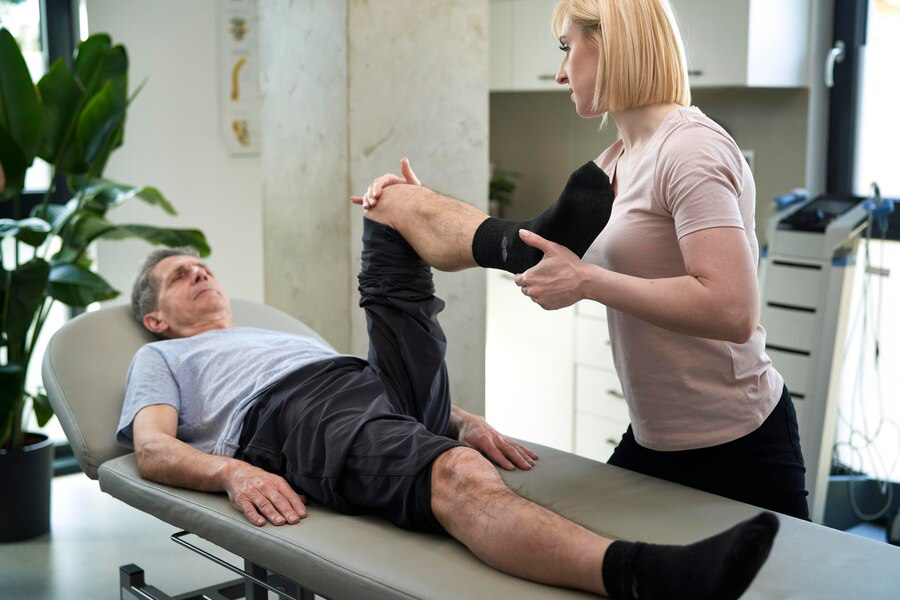In the quest for effective pain relief, many are turning to alternative therapies that offer a more holistic approach to health and well-being. One such method gaining attention is Applied Kinesiology (AK). This approach, blending conventional techniques with alternative therapies, seeks to address the root causes of pain and dysfunction rather than just alleviating symptoms. In this blog post, we will explore what Applied Kinesiology is, how it works, and how it can offer a comprehensive solution for pain relief.
What is Applied Kinesiology?
Applied Kinesiology (AK) is a manual medicine technique introduced by Dr. George Goodheart in the 1960s. It merges principles from chiropractic care, traditional medicine, and nutrition to offer a comprehensive approach to health. The central idea of AK is that muscle strength and response can reveal information about the body’s overall condition. Practitioners use muscle testing to assess how various muscles respond to pressure, which they believe can indicate underlying imbalances or dysfunctions in the body.
By evaluating these muscle responses, AK aims to diagnose and treat a range of health issues. This method is designed to identify not just symptoms but the root causes of problems, allowing for more targeted and holistic treatment plans.
How Applied Kinesiology Works
The premise of Applied Kinesiology is relatively straightforward: muscles are seen as an indicator of the body’s overall health. According to AK practitioners, muscle weakness or strength can reflect issues in different parts of the body, including the organs, nervous system, and even the emotional state.
Muscle Testing
This is the cornerstone of Applied Kinesiology. The practitioner applies pressure to a specific muscle while the patient resists. The strength of the muscle response is believed to reveal information about the body’s health. For instance, a weak response might indicate an issue in the corresponding organ or system.
Diagnosis and Treatment
Based on muscle testing results, practitioners may suggest a variety of treatments. These can include chiropractic adjustments, nutritional changes, or specific exercises. The goal is to address the identified imbalances and restore the body’s natural equilibrium.
Integration with Other Therapies
AK is often used in conjunction with other therapeutic methods. For example, it may be combined with traditional chiropractic care, acupuncture, or dietary changes to provide a more comprehensive treatment plan.
Benefits of Applied Kinesiology
Applied Kinesiology offers a range of potential benefits, particularly for those seeking a more holistic approach to pain relief and overall health.
Holistic Diagnosis
Unlike traditional methods that might concentrate solely on relieving symptoms, Applied Kinesiology seeks to uncover and address the underlying causes of health issues. This holistic approach often results in more thorough and effective treatment plans that consider the whole body’s health.
Personalized Treatment
Applied Kinesiology’s focus on individual muscle responses allows for highly customized treatment plans. This personalization ensures that therapies and interventions are specifically tailored to the unique needs of each patient, potentially leading to more effective and satisfactory health outcomes.
Non-Invasive
Many techniques used in Applied Kinesiology are non-invasive, avoiding the need for surgery or medication. This non-intrusive approach is often preferred by individuals who seek natural and less disruptive methods for improving their health and managing pain.
Complementary to Conventional Medicine
Applied Kinesiology can be effectively integrated with traditional medical treatments. This complementary approach enhances overall health by providing additional support and therapeutic options, creating a more comprehensive treatment experience that addresses both conventional and alternative aspects of care.

Applied Kinesiology and Pain Relief
For those suffering from chronic pain, Applied Kinesiology can offer a valuable alternative or complementary approach to traditional pain management techniques. Here’s how AK might help with pain relief:
Identifying Root Causes
Chronic pain often has complex causes that may not be immediately apparent. AK’s focus on muscle response can help identify underlying issues such as nutrient deficiencies, structural imbalances, or emotional stressors that might be contributing to pain.
Customized Interventions
Once the root causes are identified, AK practitioners can develop personalized treatment plans. These plans may include specific exercises to strengthen weak muscles, dietary adjustments to address nutritional deficiencies, or chiropractic adjustments to correct structural imbalances.
Enhancing Recovery
By addressing the underlying causes of pain, AK can potentially enhance the body’s natural healing processes. This might result in more effective and longer-lasting relief from chronic pain.
Stress Reduction
Chronic pain can be exacerbated by stress and emotional factors. AK techniques often include stress-reduction strategies, which can further contribute to pain relief and overall well-being.
Considerations and Limitations
While Applied Kinesiology offers many potential benefits, it’s important to approach it with an open but informed mind. Here are some considerations and limitations to keep in mind:
- Individual Variability: Results can vary significantly from person to person. What works well for one individual might not have the same effect for another.
- Integration with Conventional Medicine: While AK can be a valuable complementary approach, it should not replace conventional medical treatments, especially for serious or life-threatening conditions. Always consult with your primary healthcare provider before starting any new treatment.
- Practitioner Expertise: The effectiveness of AK can depend on the skill and experience of the practitioner. It’s important to choose a qualified and experienced AK practitioner to ensure you receive the best care.
Holistic Health Insights from Applied Kinesiology
Applied Kinesiology (AK) offers a unique perspective on health by focusing on the holistic integration of the body’s systems. Rather than treating symptoms in isolation, AK aims to uncover underlying imbalances that could be affecting overall well-being. By assessing muscle strength and response, practitioners can identify issues that might not be immediately obvious through conventional diagnostic methods. This comprehensive approach helps in understanding how various factors—such as nutritional deficiencies, structural imbalances, and emotional stress—interact to impact health.
Through this holistic lens, AK provides insights into how different aspects of a person’s life contribute to their health. It allows for a more thorough diagnosis and treatment plan that addresses multiple facets of health, rather than just the symptoms. This method promotes overall wellness by aiming to balance and harmonize the body’s systems, potentially leading to improved health outcomes and a more sustainable approach to managing well-being.
Revolutionize Pain Management with a Holistic Approach
Pain management has traditionally focused on symptom relief through medication and physical treatments. However, Applied Kinesiology introduces a revolutionary approach by integrating holistic principles into pain management. By evaluating muscle responses, AK identifies the root causes of pain, which may include underlying imbalances in the body’s organs, nervous system, or nutritional status. This comprehensive assessment allows for the development of a treatment plan that goes beyond merely masking pain.
Incorporating Applied Kinesiology into your pain management strategy can transform the way you address chronic pain. Instead of relying solely on conventional methods, AK offers a holistic solution that considers the body as a whole. This approach can lead to more effective and enduring relief by targeting the fundamental issues contributing to pain, enhancing overall well-being, and promoting a balanced, healthy lifestyle.
Applied Kinesiology: Your Personalized Path to Pain Relief
Applied Kinesiology offers a personalized approach to pain relief by focusing on individual muscle responses and health conditions. This method allows practitioners to tailor treatments specifically to each patient’s unique needs. By using muscle testing, AK can uncover specific imbalances or dysfunctions in the body that may be contributing to pain. This targeted approach ensures that the treatment plan addresses the root causes rather than just alleviating symptoms.
Choosing Applied Kinesiology means embarking on a customized path to managing and relieving pain. The personalized nature of AK provides a more precise and effective way to address health issues, offering solutions that are uniquely suited to each person’s situation. This individualized approach can lead to better outcomes and a more holistic understanding of your health, guiding you towards a more balanced and pain-free life.
Conclusion
Applied Kinesiology offers a transformative approach to pain relief by focusing on a holistic and personalized treatment method. By evaluating muscle responses, this technique identifies underlying imbalances that contribute to pain, allowing for more targeted and effective interventions. Whether addressing chronic pain or aiming to enhance overall well-being, AK provides a comprehensive solution that integrates various aspects of health. For those in Overland Park, Integrative Chiropractic provides expert care through Applied Kinesiology. For more information or to schedule a consultation, contact 913-451-7500. Embrace a holistic approach to pain relief and discover the benefits of a tailored treatment plan.

